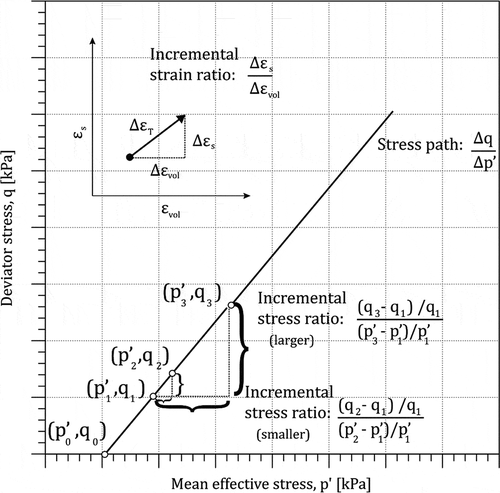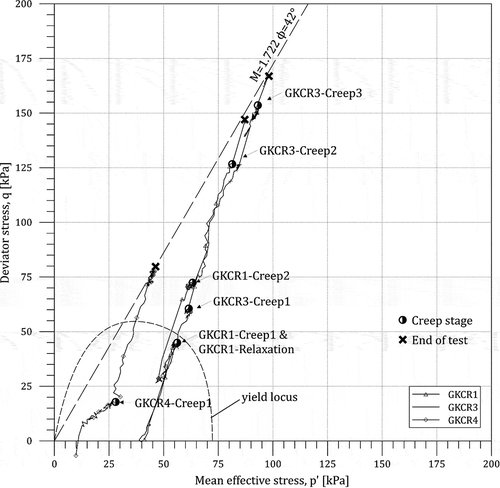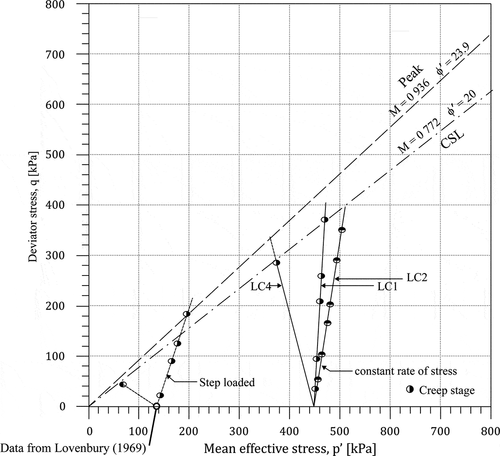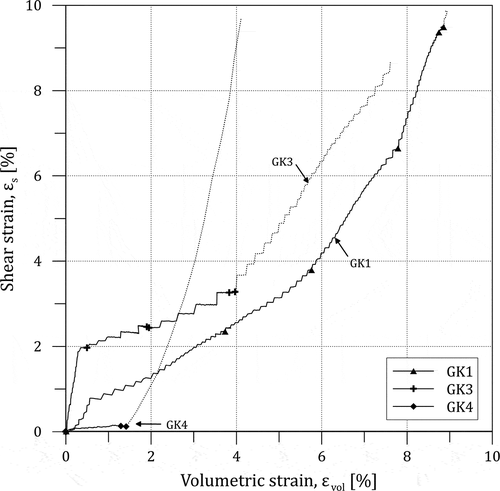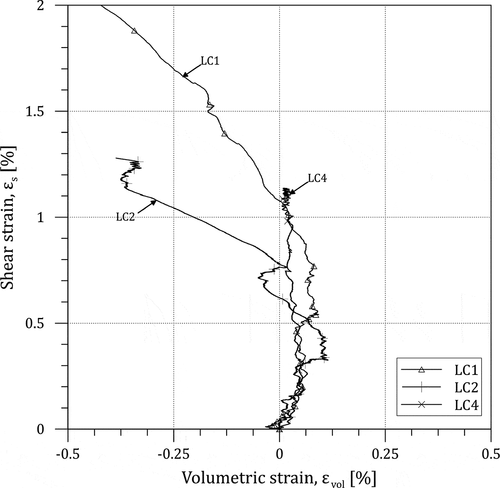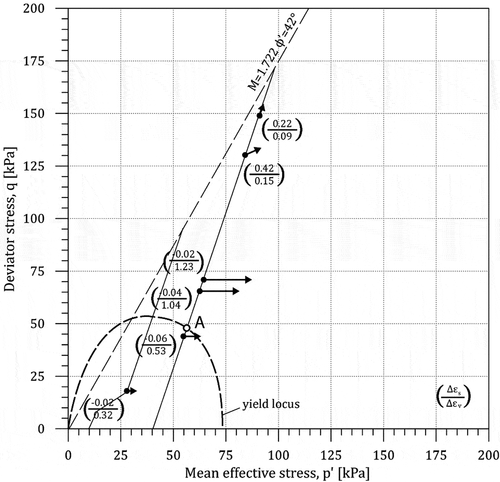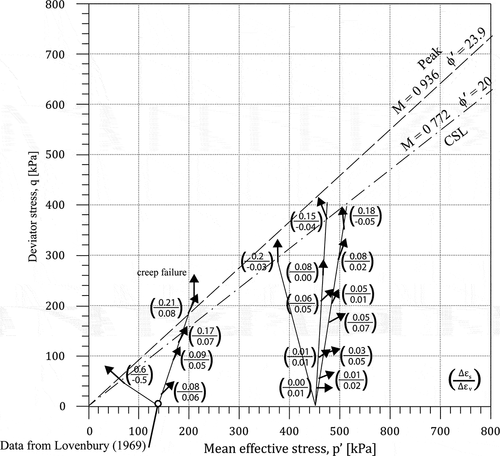Figures & data
Figure 1. Curve of void ratio versus log (time) and definition ‘secondary: compression coefficient (adapted from Yin and Feng, Citation2016).
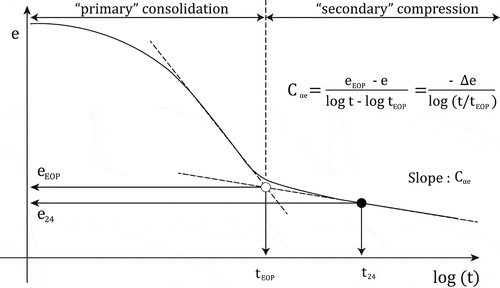
Figure 3. Stress conditions applied in creep test on a lightly overconsolidated clay (Le et al., Citation2019, modified from Tavenas et al. Citation1978).
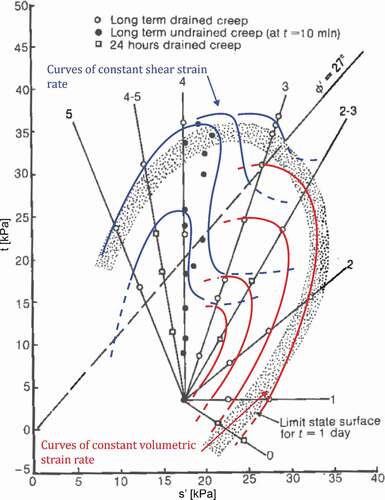
Figure 4. One-dimensional compression curves of structured and unstructured gypsum–kaolin specimens (Le and Airey Citation2021).
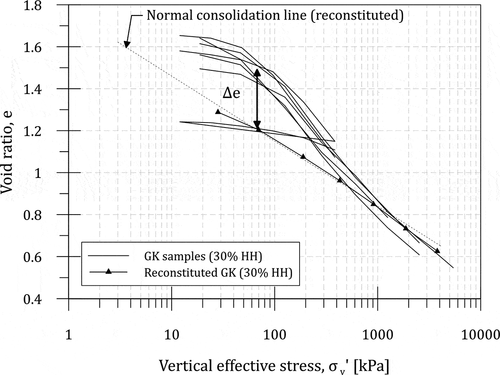
Table 1. Material properties.
Figure 5. One-dimensional compression curves of undisturbed and reconstituted specimens of London Clay.

Table 2. Test summary.
Figure 8. Development of strain for gypsum-kaolin (GK) specimens (a) stress-strain behaviour. (b) time of strain development.
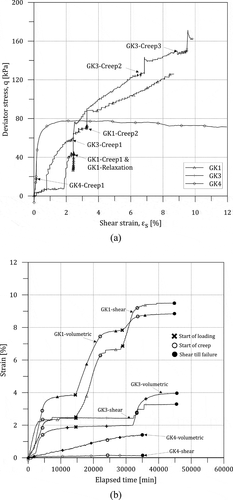
Figure 9. Large stress-strain behaviour of intact London Clay (LC) with intermediate stages of constant stress.

Figure 10. Development of volumetric and shear strain with time for samples of London Clay with time.

Figure 15. Typical strain development at constant stress. Development of strain for Sample LC1 at Creep Stage 3: Volumetric (a) strain against time (b) strain-rate against time; Shear (c) strain against time (d) strain-rate against time.
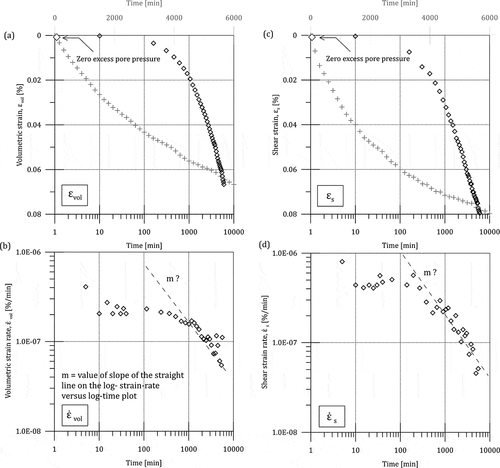
Figure 16. Influence of incremental stress ratio ( on the settlement time curves (after Leonards and Altschaeffl Citation1964) with permission from ASCE.
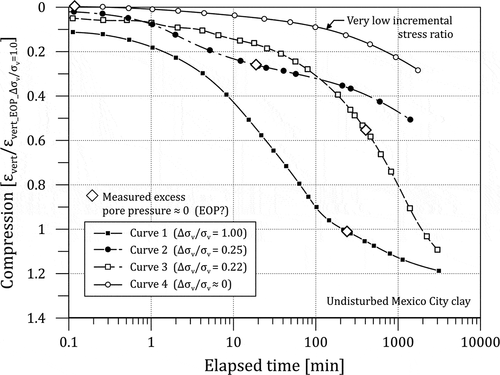
Table

